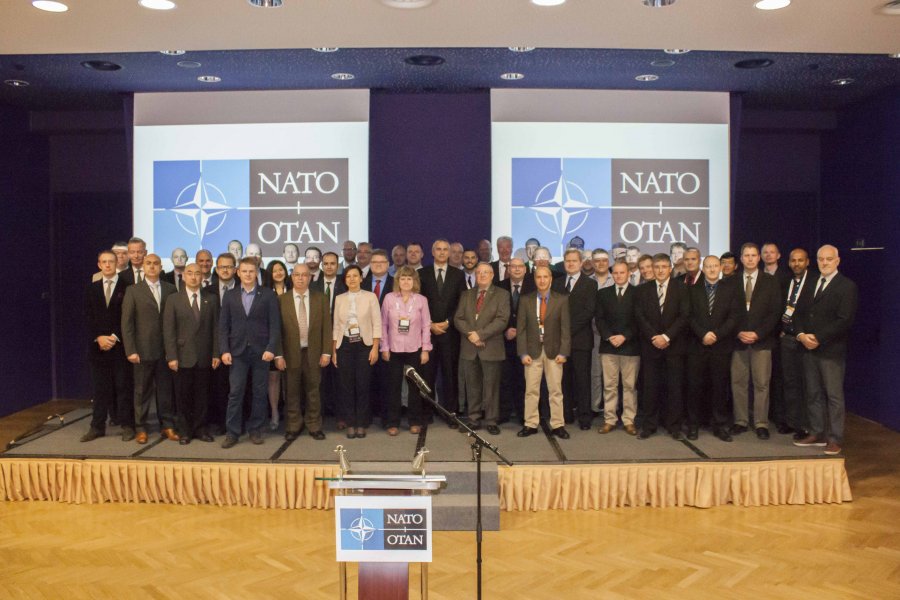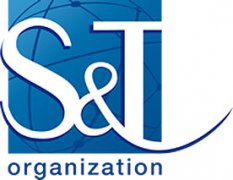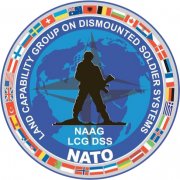FUTURE FORCES FORUM úzce spolupracuje s pracovními skupinami NATO, EDA a dalšími mezinárodními organizacemi. Zástupci těchto skupin a institucí jsou aktivně zapojeni do odborného programu, výstavy a dalších akcí v rámci FFF, což přináší našim vystavovatelům a partnerům výjimečnou příležitost osobně diskutovat zkušenosti z operací a požadavky pro budoucí vojenské a bezpečnostní projekty. Vystavovatelům a partnerům FFF se také nabízí výjimečná možnost prezentací během oficiálních jednání pracovních skupin. Pro více informací o možnostech prezentací nás prosím kontaktujte.
NATO CENTRES OF EXCELLENCE
Představitelé center výjimečnosti NATO jsou zapojeni do programu FFF 2018.
- NATO CMDR (Crisis Management and Disaster Response) COE
-
NATO MILENG (Military Engineering) COE
-
NATO C-IED (Counter Improvised Explosive Devices) COE
-
NATO MILMED (Military Medicine) COE
-
NATO M&S (Modelling & Simulation) COE
-
NATO ENSEC (Energy Security) COE
-
NATO EOD (Explosive Ordnance Disposal) COE
-
NATO JCBRN (Joint Chemical Biological Radiological Nuclear) Defence COE
NATO ARMY ARMAMENTS GROUP (NAAG) LAND CAPABILITY GROUP DISMOUNTED SOLDIER SYSTEMS (LCG DSS)
Over 200 international experts, members of national acquisition systems and standardization offices from more than 28 NATO Allies and partner nations in the area of individual systems - equipment, protection and armament.
DSS experts cover:
- Combat Clothing, Individual Equipment & Protection – All issues related to the combat clothing, individual equipment and protective equipment of dismounted soldier systems. The main scope is a key component of Integrated Personal Protection.
- Sub Group: Team of Experts Flame Resistant
- Small Arms Ammunition Interchangeability – All technical aspects of Small and Cannon Calibre Ammunition (up to and including 40 mm and the ancillary items such as links, clips, magazines, bandoliers, boxes, etc.).
- Sub Group: Team of Experts ATT
- Soldier Capabilities Analysis Group (SCAG) – Assessing the operational needs of coalition tactical dismounted forces.
- Sub Group: Team of Experts Human Systems Integration
- C4I & System Architecture (SA) – Identifying and maintaining interoperability between soldier systems and between soldier systems and tactical vehicles. Interfaces include plugs, connectors and electrical and data exchange protocols, digitization and the ability to transfer battlefield information between soldiers during dismounted operations of nations.
- Sub Group: Power Team of Experts
- Weapons & Sensors (W&S) – Issues related to soldier's weapon systems, grenades and shoulder launched and guided anti-
 tank weapons, as well as dedicated sensors including day and night sights, laser designators, tactical lights and fire control systems. Weapon system includes the weapon itself, different types of ammunition and the dedicated accessories, the interface of weapons and sensors with the various other parts of the soldier system and relevant Combat ID related Standards.
tank weapons, as well as dedicated sensors including day and night sights, laser designators, tactical lights and fire control systems. Weapon system includes the weapon itself, different types of ammunition and the dedicated accessories, the interface of weapons and sensors with the various other parts of the soldier system and relevant Combat ID related Standards.
- Sub Group: W&S STANAG 4512 Team of Experts
- Sub Group: W&S Sensor Team of Experts
- Sub Group: W&S Suppressor Team of Experts
- Power & Connectors – Identification of soldier system power connectivity requirements, development of power and data electrical connectivity standards and common format power sources. Their emphasis is on providing power to the dismounted soldier and soldier systems within a coalition operation.
- There are also various Ad Hoc groups or Teams of Experts and/or Quick Reaction Teams as necessary to accomplish its mission in areas such as:
- Head-Borne Systems
- Integrated Personal Protection
- Dismounted Battlefield Combat ID and Markings
- Embarked Personnel ToE
- ToE Non Lethal Millimeter Wave
NATO SCIENCE AND TECHNOLOGY ORGANIZATION (STO)
Acts as NATO’s principal organization for science and technology research.
Defence Science and Technology (S&T), in the context of NATO, is defined as the selective and rigorous generation and application of state-of-the-art, validated knowledge for Defence and Security purposes. The term is broadly inclusive of the physical, engineering, information, human, medical and social sciences.
NATO S&T is comprised of activities that contribute to the generation and exploitation of scientific knowledge and technological innovation, addressing the short-, medium- and long-term horizon. NATO S&T includes programmes and activities that Nations, NATO bodies and Partners elect to perform within the trusted NATO framework. NATO S&T serves the Security and Defence posture of the Nations and NATO, and supports the core tasks of the Alliance as set out in the Strategic Concept. The vast majority of NATO S&T work is funded directly by the Nations.
NATO BIOLOGICAL Medical Expert Panel
Terms of Reference:
Mission:
- Coordinates standardization work in the biological medical defence field.

- Provide useful forum for nations to share information on their R&D programs.
- Provide subject matter expertise on biological aspect of multiples STANAG and A Med P ranging from the burial needs of infectious p
atients to the safe aeromedical evacuation of biological casualties. - Conduct tabletop medical planning and response exercises, in support of NATO and Mil Med COE Exercises: Vigorous warrior 2015 and 2017, Clean Care 2016, Trident Juncture 2018, etc.
- Forum for distributing the lessons learned from CBRN field exercises.
Links with other NATO Bodies and organizations:
- Report regularly to the CBRN Med WG
- Update Briefing from ACO and ACT
- Liaison with
- FHP WG (Force Health Protection Working Group)
- Med INTEL P (Medical Intelligence Panel)
- FWSVS (Food and Water Safety and Veterinary Support Panel)
- COMEDS
- IMS
- HFM panel
- HFM 239 Matrix Methodology for Assessing Future Biowarfare Threats
- HFM 186 Research on Medical Countermeasures against Biological Agents
BioMedP is responsible of the following documents:
- STANAG 2242 Chemoprophylaxis and Immunotherapy of NATO Personnel Against Biological Warfare Agents
- STANAG 2462, AMedP-06, NATO Handbook on Medical Aspects of Defensive Operations (Biological)
- STANAG 2529, AMedP-74 Rapidly Deployable Outbreak Investigation Team (RDOIT) for Suspected Use of Biological Warfare Agents
- "Dirty dozen list" - list of biological agents consistent with the new "BioMed-P Agent Database" list in support of STANAG 4632 – Deployable NBC Analytical Laboratory.
- High Level Containment Catalogue (HLCCC)
Topics of interest
- Prophylaxis and medical countermeasures against Biological threats,
- Forensic aspects of biological investigation after suspected intentional release,
- International Health Regulation (IHR)
- Laboratory network,
- "Far Forward Diagnostics"
- Restriction of Movements (ROM)
NATO JOINT NON LETHAL WEAPON CAPABILITIES GROUP
MILITARY COMMITTEE LAND STANDARDIZATION BOARD - Helicopter Interservice Working Group
MILITARY VETRONICS ASSOCIATION (MILVA)
- Establish and maintain an open forum for key proponents of the data communications, electronics and defense industry and allied government agencies
- Assess existing/emerging data communications technology with respect to the needs of military ground vehicles (timing constraints, message profiles, throughput)
- Determine the data distribution characteristics of optimal Vetronics systems by considering alternate architectural configurations and performance requirements of future and emerging systems
- Establish policy/standards to facilitate cost effective and efficient solutions for military vehicle data communications
- Maintain liaisons with Industrial Standardization Bodies
- Maintain liaisons with military ground vehicle program management
HAZARD MANAGEMENT PANEL
A specialized group of approx. 25 experts.
PROJECT TEAM MEDICAL, EUROPEAN DEFENCE AGENCY
- Increase the exchange of information between participants on developments in the area of medical support.
- Provide a structured approach for further work.
- Identify potential new issues and projects to be addressed by the members.
- Overseeing and shaping the work of the related Ad Hoc Working Groups.
- Ensure coherence between the different fields of activity.




